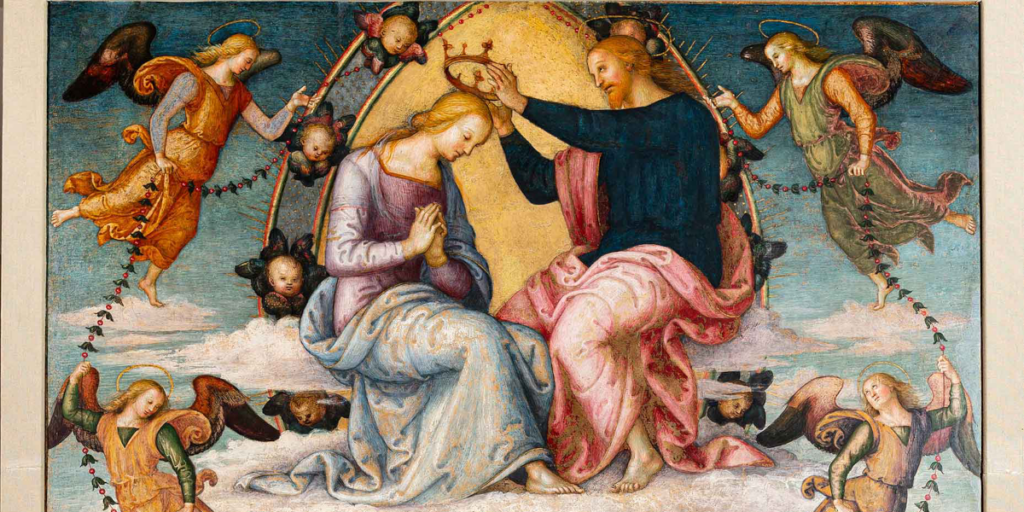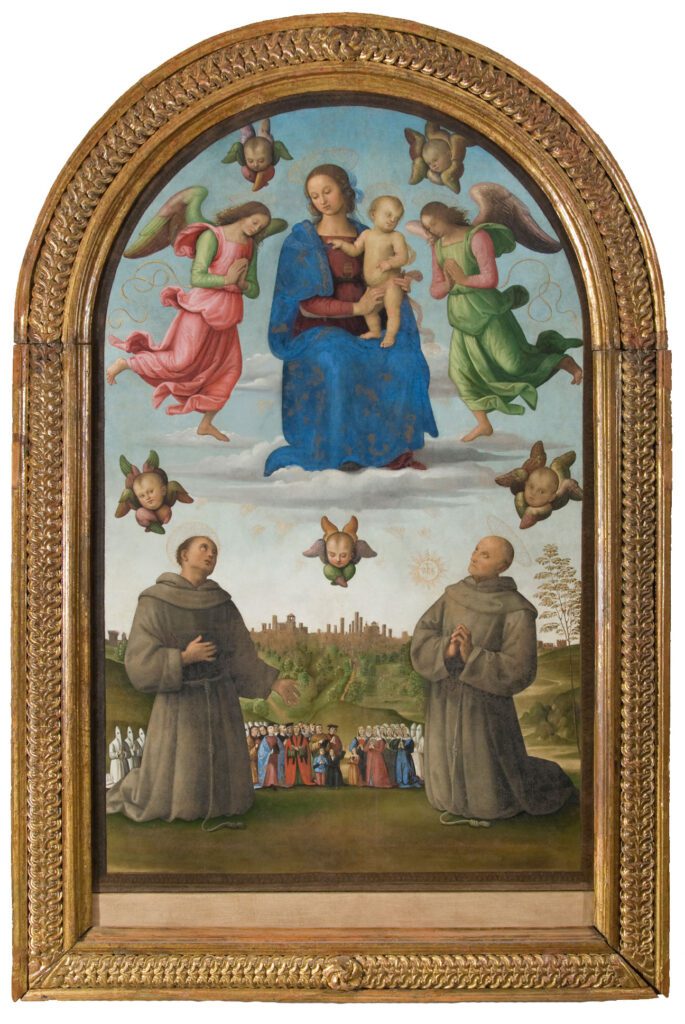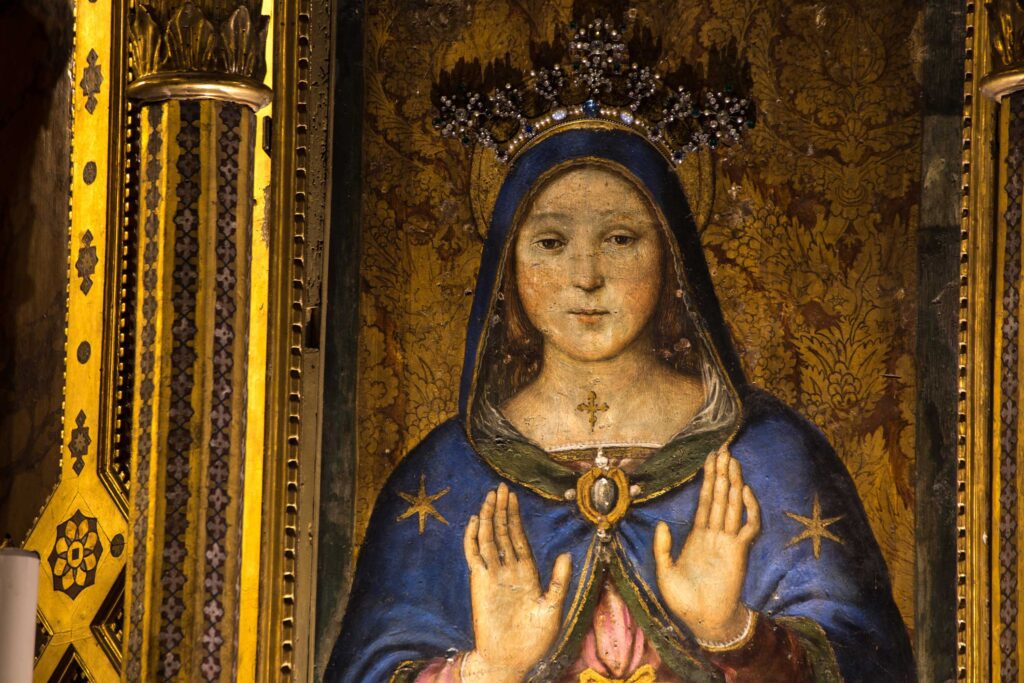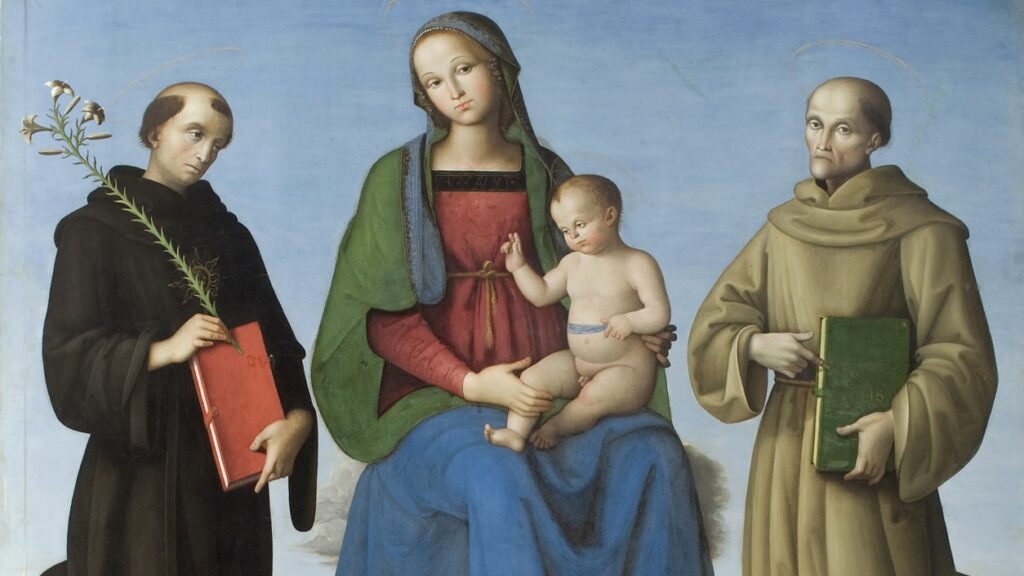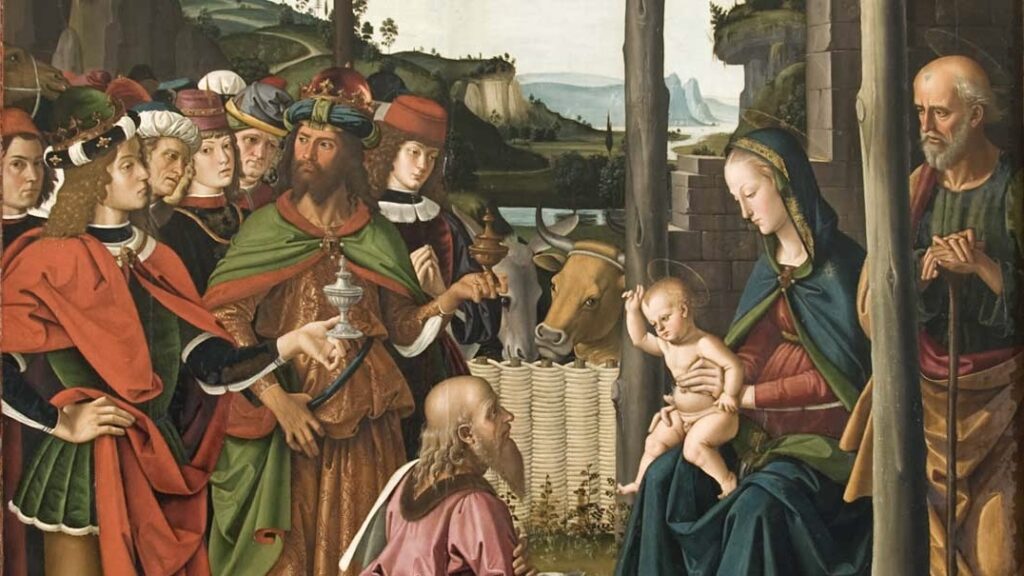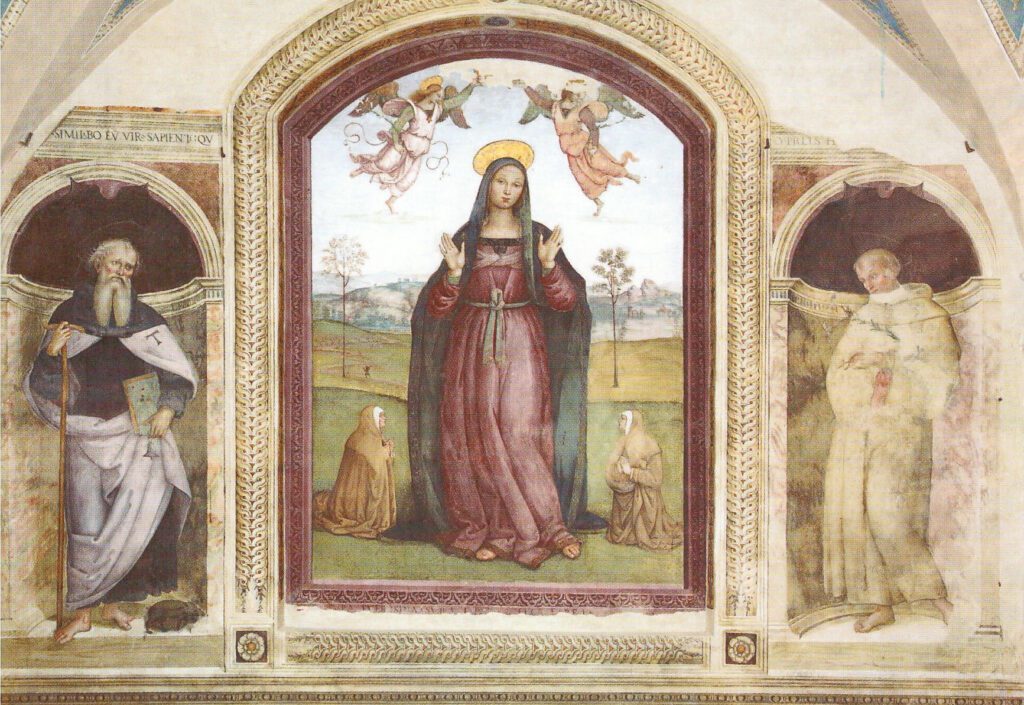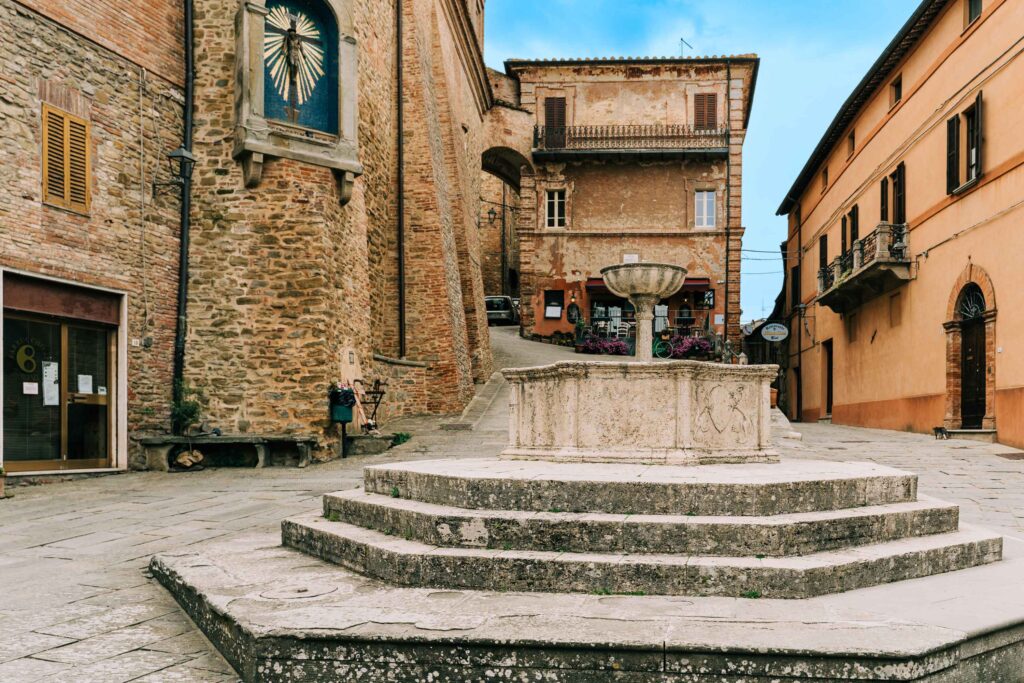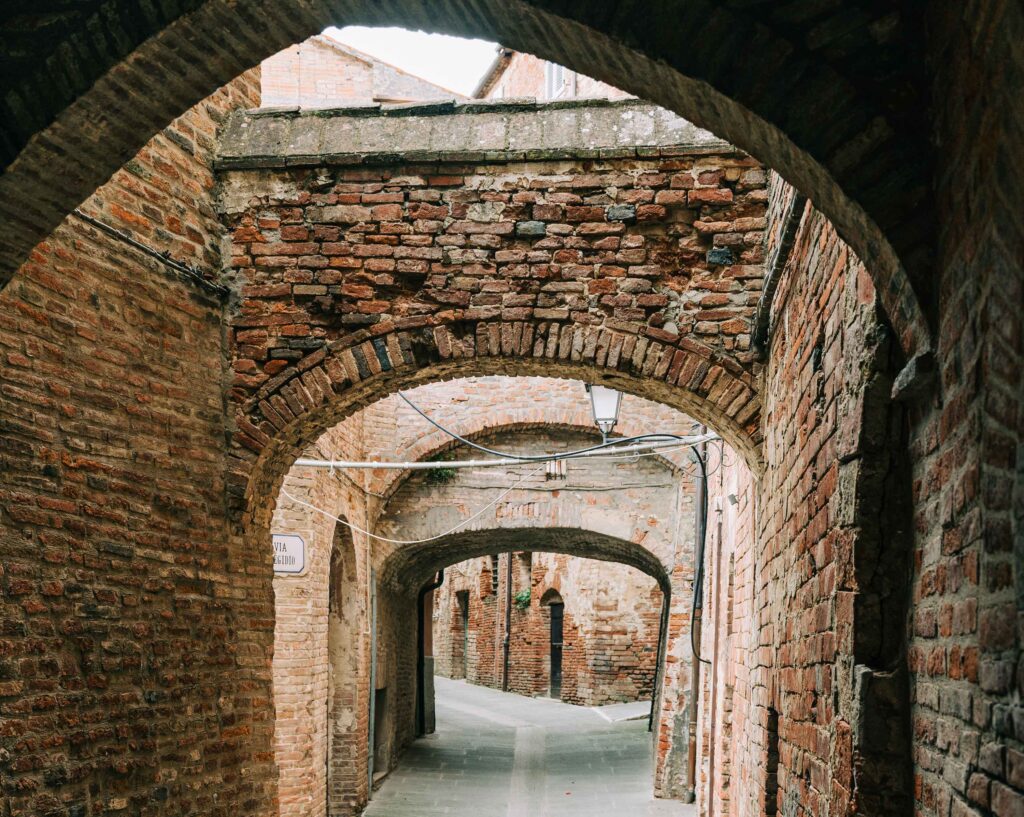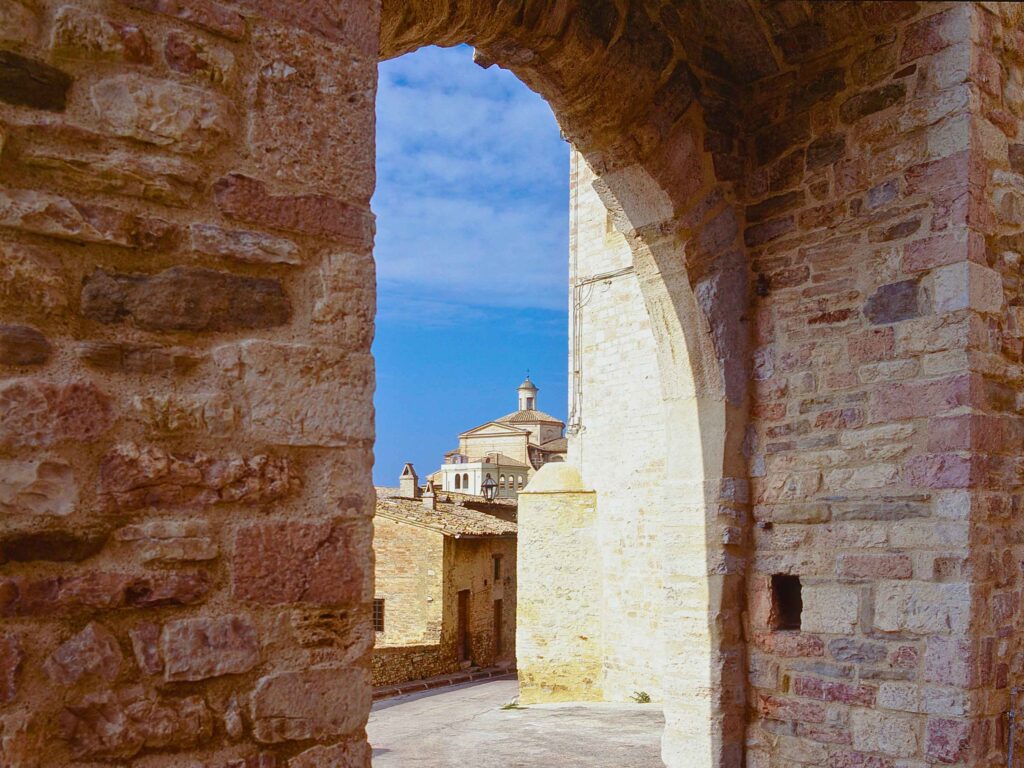Perugino was much attached to Perugia, the place he first moved to after spending his youth in Città della Pieve; Perugia would also provide him with his nickname. He would then spend many years in Florence, where he met the top artists of that time and opened his first workshop. In order to handle all the commissions he received from all over Italy, Perugino opened a second workshop in Perugia – a “school” that would be attended by no less than a young Raphael. Once famous for his success in Rome (where he had been entrusted with prestigious jobs, among which the frescoes on the side walls of the Sistine Chapel), in 1496 he went back to Perugia. And beside many commissions in buildings of major importance, in 1504 the town gave him the honorary citizenship.
Perugino stayed in the Perugia territory up until his death in 1523, when he was hit by the plague in Fontignano, a nearby village that has currently become a hamlet of Perugia.
The link between “Augustus’ City” and the Renaissance painter is strong still today, given the great number of works scattered in different religious buildings, along with the ones on exhibition at the National Gallery of Umbria. The town’s main street (corresponding to the old cardo, one of the two fundamental streets in the Etruscan and Roman cities) is named after him: Corso Vannucci, “Pietro Vannucci” being his full name.
In the National Gallery of Umbria the following Perugino works can be admired:
- The Adoration of the Magi, oil on panel (1475, according to Giorgio Vasari), one of his first works in Umbria, commissioned by the powerful Baglioni family;
- An early work, the Pietà Gonfalone (religious standard; about 1472), tempera on canvas, coming from the Franciscan convent in Farneto, near Perugia;
- Saint Bernardine healing a girl and The miracle of the child born dead (1473), part of The Miracles of Saint Bernardine, a set of small wooden panels, a.k.a. the Saint Bernardine panels, painted with tempera;
- The oil painting Our Lady of Consolation (1496-98), made for the Brotherhood of the Disciplinati; quite close to Virgin Mary and the Christ Child as they look in the Tezi Altarpiece;
- The Baptism of Christ and some scenes in the predella (a rectangular panel at the base of a polyptych or altarpiece) of the Augustine Polyptych, an oil-on-panel painting for the Church of the same name in Perugia;
- The Tezi Altarpiece (about 1500), i.e. commissioned by Bernardino d’Angelo Tezi, a notary of both the College of Money Changers and the College of Priors, for his family chapel;
- The devotional Gonfalone/standard of Justice (about 1496), on commission from the St. Bernardine Brotherhood;
- The Monteripido Altarpiece (1502-04), a two-faced work in which painting and sculpture are mixed; commissioned by the Franciscan friars of the convent of San Francesco al Montek.a. Monteripido for their church;
- The Adoration of the Shepherds (about 1502), a fresco then removed from one of the chapels outside the Church of San Francesco al Monte (“of Saint Francis, on a slope”); recently restored, and again on exhibition in the Gallery since 2022;
- The Transfiguration Altarpiece (1517), oil on panel.
Other Perugino works existing in Perugia are:
- Virgin Mary and the Christ Child (about 1490), tempera on panel, in the Baldeschi Palace; close to the Decemviri Altarpiece from a stylistic viewpoint;
- Our Lady of Graces, and the Saints Anthony the Abbot and Anthony of Padua (about 1512), a fresco in the Agnes Monastery;
- The wall painting Our Lady of Graces in Lawrence’s Cathedral; previously ascribed to a pupil of Perugino, Giannicola di Paolo; we only know that it was restored in 1565;
- The Virtues, a set of frescoes in the Hearing Room at the College of Money Changers (1490-1500), painted by Perugino at the acme of his career. It shows heroes and personages from the ancient world along with prophets and Sibyls;
- The Holy Trinity, and Saints, a fresco in the Severo Chapel; a work first carried out by Raphael (about 1505-08), later on by Perugino (1521);
- A Pietà, oil on panel (possibly 1512-15), originally part of the St. Augustine Polyptych, now in the Peter Basilica, Perugia; and a series of saints from an Ascension set (1496), now in the same abbey church.
Finally, works he made in Perugia, but no longer available:
- The Decemviri Altarpiece (1483-95) originally painted for the Palace of Priors. Perugino was entrusted with this job after the death of another artist, Pietro di Galeotto. Usually on exhibition at the Vatican Museum, it came temporary back to Perugia in 2019 thanks to a loan;
- The Marriage of the Virgin (1501-04), oil on panel, painted for the Chapel of the Sacred Ring inside the St. Lawrence Cathedral; now at the Museum of Fine Arts in Caen, France;
- The decorations in the main hall of the Palace of Priors (1475), commissioned by the City Hall; now lost.
Discover the testimonies of Perugino today
Routes and itineraries to discover the works of the divine painter
